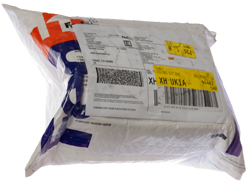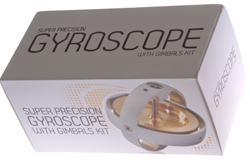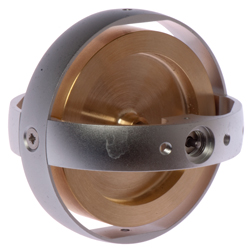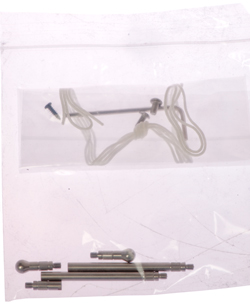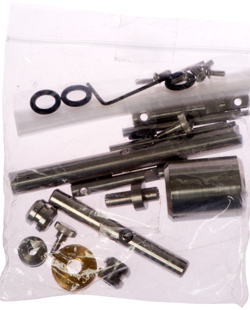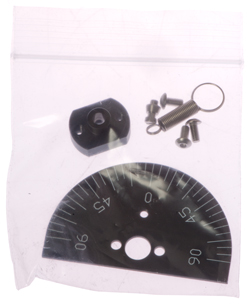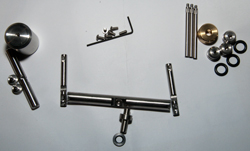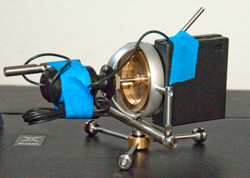Super Precision Gyroscope
© Brooke Clarke 2015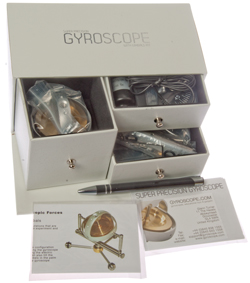 |
Fig 11 Plücker and Fessel configuration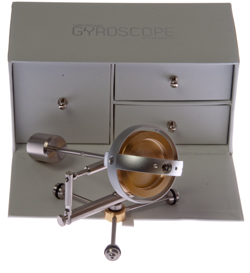 |
Description
North Finding
Photos
Related
References
Links
Background
As part of my interest in gyroscopes I got this one from Gyroscopes.com along with the optional gimbals and angle scale.
Shipping
As part of the order (Friday 14 Aug 2015) process I paid $31.46 extra for Fedex shipping (the priority level was not specified). I received the package on Tuesday 18 Aug 2015 which is excellent service by both Gyroscopes.com and Fedex. The thing that's disturbing is that if I wanted to ship the same 2# 6oz package back Fedex in the U.S. would charge me from $117 to $170!!!! I know that if you have a Fedex account they give shippers a discount, but there's more than a 10 times difference. Why is that?
Description
The kit comes in a nicely printed box and inside there's a chest with three drawers. The left big drawer holds the gyroscope, the upper right drawer holds the DC motor along with the angle scale and the bottom right drawer holds the gimbals kit. A pen is included marked Gyroscope.com.
There are two information sheets, one for the gyroscope (slightly different than the on line version) and one for the gimbals kit (slightly different from the on line version), but none for the angle scale.
From the data sheet:
Flywheel diameter: 2.08"
Flywheel thickness: 0.47"
Note this is very similar to the flywheels I have made (I didn't know that when I designed them).
Accessory threads: 3x0.5mm
There are a number of possible configurations, but neither a full 3 degrees of freedom nor north finding configuration is possible.
July 2016: It turns out that while the flywheel is well balanced the first gimbal is not at all balanced, so this unit can not do the Foucault Earth rotation experiments. This is disappointing since this is a better quality instrument than the one used by Foucault except for the gimbal balance.
North Finding
The main reason I got this gyro is because it's gimbals are almost what's required for North Finding.
But when allowed to run for 15 minutes (the max time for my DSLR in video mode, it had just turned 3/4 turn clockwise.
See Fig 10.
Photos
Fig 1 Fedex Pak 1.75 kg
Fig 2 Box
Fig 3 Chest of Drawers
Fig 4 Super Precision Gyroscope
The gyroscope (with two ball end supports) is 5.1 oz is (145 g)
Fig 5 DC motor & 4 AA battery box w/ 0n-Off switch
The motor weight about 2.2 oz (62 g)
not counting the battery box
Fig 6 Standard accessories
Note: the string is for balancing not for spinning.
Fig 7 Optional Gimbals Kit
Fig 8 Optional Rate Kit
Fig 9 Gimbal Kit parts
The counterweight is 4.2 ox (120 g)
and the 63mm x 8mm dia rod is 0.3 oz (22 g)
Fig 10 North Finding Experiment 1
After 15 minutes the gyro has turned clockwise 3/4 turn,
but did not try to stop at North.
March 2016 - that may be because this is not a pendulous
configuration, i.e. no supporting string like in Foucault's setup.
Related
Gyroscopes
MITAC Classroom Demonstration Gyroscope
Torpedoes
References
19 Aug 2015 Letter to Glenn at Gyroscopes.com
Hi Glenn:
I have a passion about North Finding.
As you know Léon Foucault named the Gyroscope (watch the turning of the Earth). He published his gyroscope papers about 8 years after the work on the pendulum that demonstrated that the Earth is turning. The motivation was that the rate of turning for a Foucault pendulum at either of the poles is 24 hours, but at the equator it does not show any movement and at most latitudes the time for the Earth to make one turn under the pendulum is longer than a day and so not as good a demonstration as he wanted.
http://www.prc68.com/I/Gyroscopes.html#Foucault and scroll down a little.
For the past month I've been studying his original papers but I don't read or speak French so it's been slow going. He didn't go into great detail and after translation it's not at all clear what he really was trying to say. But there's no question that he said (in my words):
1. if a gyroscope is on a turning platform it will tend to move to align it's spin axis with that of the platform. Your gimbals demonstrate this nicely. If the gyro is rotated about the vertical pivot the spin axis will move toward an up-down direction. If rotated in the opposite direction it will try to move with the other end of the spin axis up.
2. if a gyroscope is mounted with 3 degrees of freedom in a Cardan mechanism (like used for a ships chronometer, but with the axis turned 90 degrees) i.e. full gimbals, the spin axis will point constantly to some star in the heavens. If the star you point to is in the ecliptic then using either a broom straw sized pointer or as shown on the Wiki page for Gyroscope a microscope looking at an engraved scale on the gyroscope frame you will see a rotation rate of one sidereal day. This Foucault did. Early gyroscope navigational devices used multiple gyroscopes to make a stable platform based on this idea. But this is not North Finding it's just stabilization.
3. (this is my best estimate) if a gyroscope is mounted with 2 degrees of freedom where it is free to turn in azimuth and the spin axis is free to move up and down (your gimbal kit PS why I bought it) and there's a weight attached to the frame holding the spin axis (your part with a number of tapped holes) then when the gyro is not spinning the weight will tend to level the spin axis (keep it horizontal). But (this is key) when the gyro is spinning and it's spin axis is not in the plane of the Earth's spin axis there will be a torque on the gyroscope. With the pendulous weight movement in the up-down direction is coupled to movement in azimuth is such a way as to cause the gyro axis to move into the plane of the Earth spin axis. This is the basis of the gyrocompass. The word gyrocompass is also used in relation to a gyroscope combined with a classical magnetic compass and that usage confused be for a long time. Note Foucault was only concerned with demonstrating the the Earth rotates, he had no interest in navigation. If you read the Sperry patents for a ships gyrocompass (has nothing to do with magnetic stuff) it was aimed at ships made of metal and more importantly to submarines (totally enclosed with ferrous metal) you will see that the pendulous weight does not work on a ship. It's the same problem with a pendulum clock not working on a ship.
http://www.prc68.com/I/Gyroscopes.html#Gyro_Compass
So to make a gyrocompass that works on a ship you can't use a simple pendulous gyroscope like the one proposed by Foucault.
A few days ago I got another book on Gyroscopes and it says that Foucault was not able to demonstrate North Finding because his gyro could not spin long enough. The same book also said he used a string to spin up his gyroscope which is a mistake, he used a hand cranked gear train to get to gyro to about 12,000 RPM. It would spin for about 10 minutes. He used knife edges between the frame and the first gimbal and used a suspension thread for azimuth. This is the device shown on the Wiki Gyroscope web page. I've erased the background from that image and show it on my Gyroscope page. Note in the 1850s there were no suitable ball bearings (they came over 10 years later). Other information on the early German Gyro-compass said it took 3 hours to orient itself to North.
Surveyors have North finding gyroscopes and are good to better than one mil of angle that were used to setup artillery (gun laying) and for work in mines. See:
http://www.prc68.com/I/North.shtml#AG8
http://www.prc68.com/I/North.shtml#GAK-1
I think that your gyroscope could be modified by making the vertical posts higher and adding a removable weight to the bottom of the frame that might demonstrate North Finding. BUT (and it's a big BUT) I don't know how much weight or if the angular momentum of your gyroscope is big enough. An early gyro-compass had a 3 pound flywheel and millions of gram Cm^2 moment of inertia and took 3 hours to find north. The surveyors AG8 or GAK-1 North Finding gyroscopes are much smaller and lighter and find North much faster, but unlike the early navigational compass that was tested by pointing the spin axis East-West as a worse case starting position, the surveying gyro is pointed as close to true north as possible and is manually turned in azimuth until the wandering is centered.
The angular momentum of the flywheel about the spin axis needs to be large so as to swamp frictional torques and at the same time the moment of inertia of the frame needs to be as small as possible about the vertical pivot and horizontal pivot to maximize the ability of the frame to move toward North.
--
Links
PRC68, Alphanumeric Index of Web pages, Contact, Products for Sale
